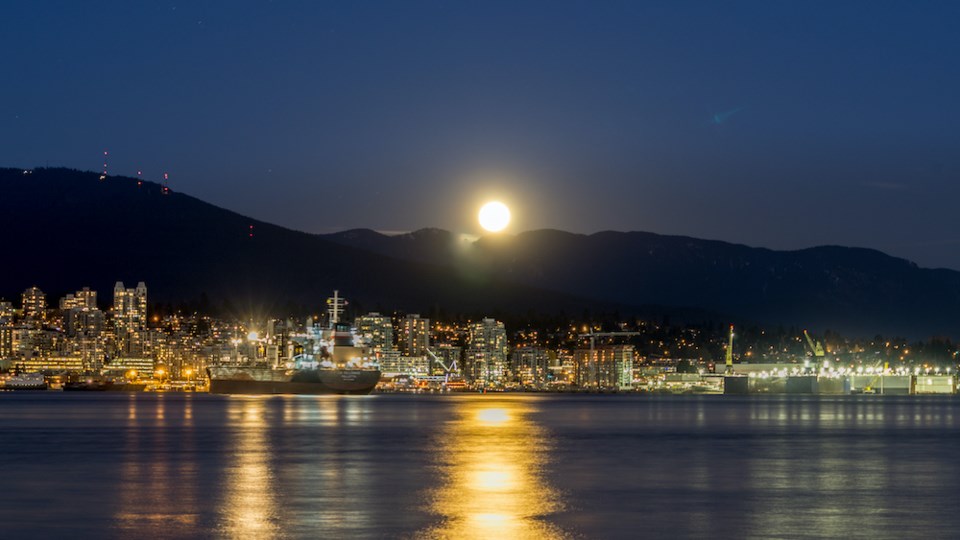Vancouverites will be privy to a brilliant 'full cold moon' at the end of December.
On the solstice (Dec. 21), a rare celestial event made a unique holiday season even more unusual, as what's been dubbed the "Christmas Star" appeared over Canada, brighter than it's been in nearly eight centuries.
It's not really a star at all -- it's a convergence of Jupiter and Saturn -- but because of their close proximity, they appeared to the naked eye to be one, single bright star.
Now, the final celestial spectacle of 2020--a brilliant full moon near the end of December--is known traditionally as the 'cold moon.' However, as with every full moon of the year, it goes by several names.
A moon by any other name...would shine as bright
According to The Old Farmer's Almanac, some Native American groups call it the 'long nights moon,' because it occurs near the winter solstice—the day with the least amount of daylight.
The name 'cold moon' became associated with the December full moon due to the month's frosty winter weather.
The full moon is set to rise in the evening on Tuesday, Dec. 29 and it will be at its fullest at 7:30 p.m. in Vancouver.
Stargazers should opt to travel as far away from city lights as possible in order to avoid light pollution that will obscure the clarity of heavenly bodies. While this works best the in more remote places, anywhere that has a higher elevation will also provide more ideal viewing conditions.
Earlier this month, one of the most productive meteor showers of the year took place in Vancouver, offering a full night of dazzling shooting stars.
Nearly 200 years old, the Geminid Meteor showers offers earthlings a brighter display every year (depending on the moonlight, of course). Space.com notes that this is due to the fact that Jupiter's titanic gravitational pull has brought the stream of particles from the, "shower's source, the asteroid 3200 Phaethon, and closer to Earth over the centuries."



